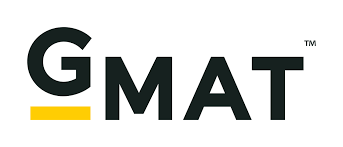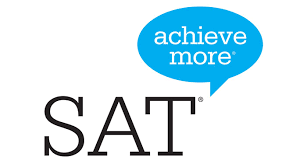Address: Plot No 219 C, Road No 4A, Raghvender Colony, Kondapur, Hyderabad, Rangareddy, Telangana, 500084.
Ielts Coaching In Hyderabad - Best Ielts Coaching In Hyderabad

- 31 Oct 2020
IELTS EXAM FORMAT
What are the test formats for IELTS Academic and IELTS General test?
The International English Language Testing System offers two variations of tests Academic and Generic.
The Academic IELTS test is taken for academic purposes and evaluates the English language proficiency of the test-taker to test their ability to perform in an academic or higher learning environment where English is the primary language of communication.
The General IELTS Test is taken for work or immigration purposes to evaluate the skills of the candidate to judge how well they can understand English and how proficient they are in using the English Language for work and everyday life that is basically in social context.
Both these test formats have four sections Listening, Reading, Writing and Speaking.
The Listening and Speaking section is common for both the Academic and General test-takers.
The Reading and Writing section are different for the Academic and General tests.
IELTS Test Pattern and Scores
| Sections | Description | Approximate time | Scores |
|---|---|---|---|
| Listening | 4 sections, 40 questions in total | 40 minutes | 0-9 |
| Reading | 3 passages, each containing 9-12 questions; 40 questions in total | 60 minutes | 0-9 |
| Writing | 2 tasks | 60 minutes | 0-9 |
| Speaking | 3 sections | 11-14 minutes | 0-9 |
IELTS LISTENING :
The content of the IELTS Listening test is same for the Academic and General Format. You will hear a series of recording for a purpose. These recordings will use various accents like British, North American, New-Zealand, Australian. The difficulty of IELTS listening questions may increase as you go on hearing the recordings. The candidates need to be extra careful about spellings as an incorrect spelling will not obtain any marks.
IELTS LISTENING FORMAT:
| Time | 30 minutes and extra 10 minutes to transfer the test taker's answers |
| What does IELTS Listening assess? | It assesses the candidate’s ability to understand the central ideas and thorough factual information, the attitudes, opinions and outlooks of speakers, the purpose of an utterance and evidence of the test-taker’s ability to follow the development of ideas. ................................................................................................................ |
| Content |
Test takers will listen to four recorded texts and write their answers to a series of questions. Recording 1: A discussion/conversation between two individuals set in a daily social context Recording 2: A monologue set in an everyday social context Recording 3: A discussion/conversation between up to four people set in an educational or training context Recording 4: A monologue on an academic topic which could be a university lecture. ................................................................................................................... |
| Questions |
40 questions total. There are four sections with ten questions each. The questions are planned in such a manner that the answers appear in the order they are heard in the audio. A range of question types are asked: - answer multiple choice questions - label a plan, map or diagram - fill in a form - complete a table - complete a flowchart - give short answers .................................................................................................................... |
| Scoring |
Each correct answer obtains one mark. Scores out of 40 are converted to the IELTS 9-band scale. Scores are reported in whole and half bands. ................................................................................................................... |
IELTS READING :
The IELTS reading test assesses a wide range of reading skills wherein the candidate has to read 3 text passages and answer 40 questions. The total time for this section is 60 minutes. The IELTS Reading section has different versions for IELTS Academic and IELTS General Test.
IELTS Reading Format:
| Time |
60 minutes No extra time to transfer answers |
| What does it assess? | It assesses the candidates skill to read for gist, central ideas, skimming, understanding logical argument and recognizing writers opinion, attitude and purpose. |
| ACADEMIC | GENERAL | |
| Content | Three long texts that range from the descriptive and factual to the discursive and analytical. | Three sections where the topics are relevant to everyday life in an English-speaking country like a text about work-related issue and a more complex topic of general interest. |
| Source | These are taken from books, journals, magazines and newspapers and might be supplemented with diagrams, graphs or illustrations, that the test-taker need to understand | They are taken from notices, advertisements, company handbooks, official documents, books, magazines and newspapers. |
| Questions |
There are 40 questions A variety of question types is used. The test-takers may be asked to fill gaps in a passage of written text or in a table match headings to written text to diagrams or charts complete sentences give short answers to open questions answer multiple choice questions Sometimes the test-taker will need to give one word as their answer, sometimes a short phrase, and sometimes simply a letter, number or symbol. ...................................................................................................................... |
| Scoring |
Each correct answer obtains one mark. Scores out of 40 are converted to the IELTS-9 band scale. Scores are reported in whole and half brands. ....................................................................................................................... |
IELTS WRITING :
The IELTS writing test assesses a myriad of writing skills. It expects the candidate to organise ideas while responding to the task, write cohesively and coherently, exhibit a wide range of vocabulary sentence structure and grammar accurately.
IELTS Writing Format:
The writing section is allotted 60 minutes and there are two tasks to perform. The Task 2 has greater weightage than Task 1.
Writing Section has different versions for IELTS Academic and IELTS General Test.
| Total Time | 60 minutes |
Task 1
| Academic | General | |
| What does Task 1 assess? | It assesses the candidate’s ability to identify the most important and relevant information and trends in a graph, chart, table or diagram, and to give a well-organised overview of it using English language accurately in an academic style. | It assesses their the ability to follow English letter-writing conventions (i.e. what order to put information in, what style to use, how to start and finish a letter), to use language accurately and appropriately and to organise and link information coherently and cohesively. |
| Content | Test takers may be asked to describe facts or figures presented in one or more graphs, charts or tables on a related topic; part from this they could be given a diagram of a machine, a device or a process and asked to explain how it works. | The test takers are presented with a situation and are supposed to write a personal response in the form of an informal, semi-formal or formal letter. |
| Source and approach | This task involves sources from educational, research or work related literature. Candidates should write in an academic or semi-formal/neutral styles and include the most important and the most relevant points in the diagram. Some minor points or details may be left out. | The situations they are asked to write about are common, everyday ones such as: writing to a college accommodation officer about problems with accommodation, writing to a new employer about time management problems they are having, writing to a local newspaper about a plan to develop a local airport, writing to a renting agency to sort out problems with the heating system in their house |
| Response Time | 20 minutes | 20 minutes |
| Response Limit | At least 150 words | At least 150 words |
| Scoring |
Each task is assessed independently.
|
Each task is assessed independently.
|
Task 2
| Academic | General | |
| What does Task 1 assess? | It assesses the ability to present a clear, relevant, well-organised argument, giving evidence or examples to support ideas and use language accurately. | It assesses the test-taker’s ability to follow English discursive writing conventions like what order to put information in, what style to use, how to start and finish discursive writing, how to organise information in paragraphs, to organise and link information coherently and cohesively and to use language accurately and appropriately. |
| Content | Test takers are given a topic to write about an academic or semi-formal/neutral style. Answers should be a discursive consideration of the relevant issues. | Test takers write a semi-formal/neutral discursive essay in response to a point of view, argument or problem. The candidates have instructions regarding how to discuss this, which may involve providing general factual information, outlining and/or presenting a solution, justifying an opinion, evaluating evidence and ideas. |
| Source and approach. | Test takers should make sure that they read the task carefully and provide a full and relevant response. For example, if the topic is a particular facet of technology, they should focus on this facet in their response. They should avoid writing about technology in a generic way and focus on the facet/side of technology the task focusses on. | Topics are of general interest, - such as: whether children’s leisure activities should be educational, why families are not so close as they used to be and how they could be brought closer, how environmental problems can be solved, who should pay for the care of old people, whether smoking should be banned in public places. |
| Response Time | 40 minutes | 40 minutes |
| Response Limit | At least 250 words | At least 250 words |
| Scoring |
Each task is assessed independently. The assessment of Task 2 carries more weight in marking than Task 1. Responses are evaluated based on
|
Each task is assessed independently. The assessment of Task 2 carries more weight in marking than Task 1. Responses are evaluated based on
|
IELTS SPEAKING :
The Speaking test assesses your spoken language skills. You will talk to a certified IELTS examiner and hence it will be like a real life like situation. Its an interactive session and takes 11 to 14 minutes.
The Speaking Section is same for both IELTS Academic and General Tests.
IELTS Speaking Format:
| Total Time | 11-14 minutes |
| What does IELTS Speaking assess? |
The IELTS Speaking test is designed to assess a wide range of skills. The examiner will want to see how well the test-taker can communicate opinions and information on everyday topics and common experiences; to do this the test-taker will need to answer a range of questions, speak at length on a given topic using appropriate language organise their ideas coherently, express and justify their opinions analyse, discuss and speculate about issues. |
| Content and Tasks | There are three parts to the test and each part fulfills a specific function in terms of interaction pattern, task input and test takers output. |
| Scoring |
The test-takers will be marked on the four criteria of the IELTS Speaking Test Band Descriptors:
|
TASK 1 (Introduction and Interview)
| Time | 4-5 minutes |
| What does Task 1 assess | It assesses the test-takers ability to communicate opinions and information on everyday topics and common experiences or situations by answering a range of questions. |
| Format and content | In this part, the examiner introduces him/herself and checks the test takers' identity. They then ask the test takers general questions on some familiar topics such as home, family, work, studies and interests. |
TASK 2 (Long Turn)
| Time | 3-4 minutes (including 1 minute preparation time) |
| What does Task 2 assess | It assesses the test-takers ability to speak at length on a given topic (without further prompts from the examiner) , using appropriate language and organising ideas coherently. It is likely that the test takers will need to draw on their own experience to complete the long turn. |
| Format and content | In this part, which is the individual long turn,the examiner will give the test-taker a task card which asks the test-taker to talk about a particular topic, including points to include in their talk.The test-taker will be given one minute to prepare and will also be given paper and pencil to make notes. The test-taker will then be asked to talk for 1-2 minutes on the topic. The test-taker will not be interrupted during this time, so it is important to keep talking. The examiner will then ask the test-taker one or two questions on the same topic. Using the points on the task card effectively, and making notes during the preparation time, will help the test takers think of appropriate things to say, structure their talk, and talk at length for 2 minutes. |
For more information on IELTS exam slot bookings or mock tests or extra help sessions or module wise training you can reach us on whatsapp - 7998556677 or visit www.roneglobal.com . Our expert team of counselors will connect to you to our experienced trainers and help you in reaching the best or your desired score.














